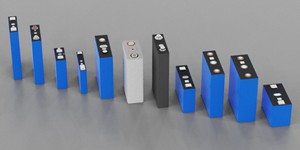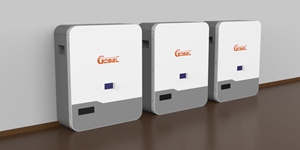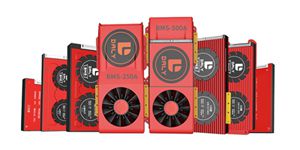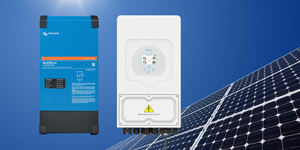NEW PROGRESS IN RESEARCH ON HOUSEHOLD ENERGY STORAGE APPLICATIONS
By Kelly posted 2022-09-30 13:26:41Home energy storage devices are essentially rechargeable batteries that store electrical energy locally for later use. They are controlled by computers with intelligent software to handle charge and discharge cycles and play an important role in the performance and economics of smart homes powered by renewable energy.
Of course, there are challenges and opportunities associated with sustainable energy supply and energy storage. Let's take a look at some of the latest research on home energy storage to see what's happening in the field and what's likely to emerge in the clean consumer tech space in the near future.
Household renewable energy generated through the use of solar panels is becoming more common as installation costs have fallen and electricity prices have risen. Solar energy is an intermittent energy source that is only generated during the day and is subject to disturbances from weather and seasonal changes.
The feasibility and limitations of various renewable energy, energy storage, on-grid and off-grid systems are well-established research topics in academia and technology.
Capital cost and comfort are key components of home energy storage decisions
Recognizing that smart home energy management systems are critical for consumers to intelligently and conveniently manage energy storage systems (ESS) and the use of home appliances, renewable energy (RES) power generation, and electric vehicles (EVs), Huan Hou and colleagues suggest a A holistic model that aggregates user preferences when arranging arrangements involving physical devices of different natures. They also describe the advantages of dedicated charging and discharging strategies for ESSs and EVs, taking into account capital costs, to provide better flexibility and economic advantages, and to extend battery life. They concluded that, based on mixed integer linear programming, the energy demands of smart homes can be adapted to ensure the lowest cost and user comfort.
Severe Weather Events and Energy Storage
A paper by Schmidt and colleagues proposes a mathematical model for home energy storage management that enhances home resilience in the face of severe weather events. The model automatically pre-determines when to start ESS charging. To this end, it establishes the operating conditions of the local distribution network, estimates the probability of outages associated with the occurrence of strong winds, and monitors meteorological parameters and the state of charge of the local ESS. The results show that it helps to improve the electrical resiliency of the house without affecting the standard operation of the ESS.
Home Energy and Demand Side Management
In this study, Lokeshgupta and Sivasubramani propose an intelligent multi-objective home demand-side management (DSM). Typically, a residential DSM handles a variety of controllable devices, which often have different work-hour priorities based on consumer preferences. Therefore, the DSM problem is modeled as a mixed integer optimization problem. These researchers demonstrate how a multi-objective mixed-integer linear programming technique (MOMILP) can solve an identified residential DSM problem.
Distribution Robust Optimization
Zhoa and colleagues compared how energy storage and demand response resources, as well as intermittent renewable generation, offer domestic customers the ability to reduce electricity usage. Their research highlights the role of smart battery control and solar power in increasing renewable energy uptake while reducing customers' electricity bills without affecting people's daily lives. Through a series of interventions, they determined that the best performance of the home energy management system was obtained by applying distributed robust optimization, and their tests determined that it was the most efficient and computationally efficient while accounting for uncertainty of.
V2H and BESS
What happens when the Vehicle-to-Home (V2H) function of an available electric vehicle is used in conjunction with a battery energy storage system (BESS) under the control of a home energy management system? Zenali and colleagues acknowledge that there is uncertainty about the amount of electricity generated by rooftop-mounted solar photovoltaic panels, so households' load demands are factored into real-time electricity prices. They implemented a two-stage stochastic process in which an artificial neural network (ANN) was trained using historical time series and an appropriate analytical battery degradation cost model was integrated into the problem.
How to determine the best BESS?
This paper by Sharma and team presents a method for determining the optimal size of the BESS for a typical zero net energy (NZE) house with a rooftop solar photovoltaic system to minimize annual electricity and battery costs. They determined the optimal battery size by solving an optimization problem formulated using hourly load and PV generation data for South Australian homes, annual battery pay rates, retail price (RP) and feed-in fee (FIT). In addition, they looked at the impact of interest rates, RP and FIT on annual net payments. They determined that, at current BESS and South Australian RP and FIT installation costs, it would be financially beneficial for homeowners to use a local BESS.
Summarize
What is the largest energy consuming sector accounting for more than 1/3 of global energy demand? --Building environment. Therefore, more policies and regulations are needed with beneficial incentives to reduce residential energy demand and emissions by stimulating renewable distributed energy sources.
The fastest growing distributed energy source today is solar photovoltaics, which will account for 22% of global electricity generation by 2050. Europe currently uses feed-in tariffs to provide residential households with compensation for rooftop photovoltaics (usually households) when electricity is fed back to the grid and will be subsidized. However, as countries reduce feed-in tariff compensation as they reach grid parity and policy goals, other options are needed.
Home energy management is one of the key components of the future smart grid environment. Decentralized power generation in private homes, especially through photovoltaic systems, is already common in many parts of the world. The development of batteries for electric vehicles and for stationary storage is stimulating the mass market for these batteries. The economics of PV systems, residential stationary battery storage and EVs all need to be considered as it is fully integrated into the home.
We should all have conversations about this type of renewable energy transition in our own residential spaces.
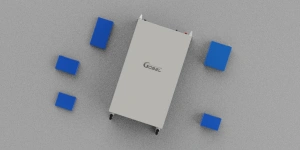
 Europe Warehouse
Europe Warehouse